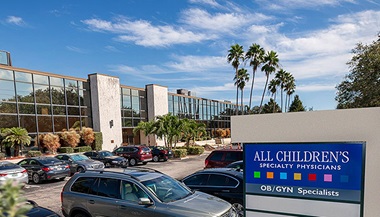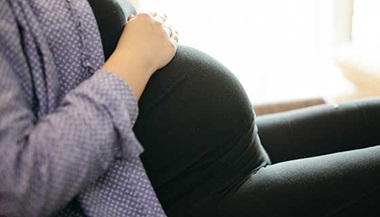Twin Pregnancy: Answers from an Expert
Reviewed By:
When you’re expecting twins, you know you’ll need two of everything for your registry. But what about staying healthy during your pregnancy? Do you need to double your food intake, weight gain and visits to the doctor? With regard to the babies, are there two placentas and two amniotic sacs, or can they share these?
Johns Hopkins maternal-fetal medicine specialist Jeanne Sheffield answers eight commonly asked questions.
Do twins share a placenta and an amniotic sac?
While some twins may share a placenta and an amniotic sac, that is not the case for the vast majority of pregnancies. Here are three major possibilities that exist:
- Two placentas and two amniotic sacs. A twin pregnancy with two placentas and two amniotic sacs is the optimal twin pregnancy, as each baby has its own nutritional source and protective membrane.
- One placenta and two amniotic sacs. In pregnancies with one placenta and two amniotic sacs, you will definitely have identical twins. Additionally, when your babies share a placenta, there is a greater risk for complications, such as twin-to-twin transfusion syndrome. Your physician will closely monitor your pregnancy to check for potential problems.
- One placenta and one amniotic sac. This is the riskiest and rarest type of twin pregnancy. Fetal complications can arise due to tangling of the umbilical cords or an imbalance in nutrients, blood or other vital life supporting systems.
Do I need to double my caloric intake during a twin pregnancy?
A common misconception surrounding twin pregnancy is that you need to double your caloric intake to provide your babies with enough nutrients. However, pregnancy nutrition guidelines aren’t simply based on the number of babies you’re carrying. Instead, they’re based on your body mass index at the time you became pregnant.
Your doctor will make individualized recommendations based on your starting weight. On average, it’s estimated that a woman’s caloric requirements will increase about 40 percent for a twin pregnancy. What’s most important, though, is that a woman eats as healthy as possible.
Do I need to take different prenatal vitamins for twins?
If you’re pregnant with twins, you should take the same prenatal vitamins you would take for any pregnancy, but your physician will recommend extra folic acid and iron. The additional folic acid and extra iron will help ward off iron-deficiency anemia, which is more common when you’re pregnant with multiples.
Will I need to visit my doctor more frequently?
While every pregnancy is different, most women carrying twins will have more frequent prenatal visits than women carrying only one baby. If your twins are sharing one placenta, you will automatically have a more frequent monitoring schedule.
If your pregnancy doesn’t have complications, your prenatal visits may not differ much from a singleton pregnancy until you get to the end of your second trimester. At that point, you’ll be seen more frequently because there is a higher risk of pre-eclampsia and preterm labor.
Do I have to see a maternal-fetal medicine specialist for a twin pregnancy?
Maternal-fetal medicine specialists see high-risk pregnancies, but not every twin pregnancy will fall into this category.
To find the best care provider for your twins, make sure that the physician is comfortable managing twins, including vaginal delivery of twins rather than only offering a cesarean section (C-section) for delivery.
Are all twin pregnancies delivered preterm?
A little more than half of twin pregnancies end in preterm delivery (before 37 weeks). While 40 weeks is the full gestation period of the average pregnancy, most twin pregnancies are delivered at approximately 36 weeks (range 32-38 weeks depending on the type of twin pregnancy).
Unfortunately, preventing preterm labor with multiples is more challenging than with a singleton pregnancy because the interventions used with singleton pregnancies are not as effective with multiples.
Can bed rest reduce the risk of preterm delivery?
Scientific data show that bed rest does not prevent preterm delivery. In fact, bed rest can increase your risk of developing blood clots and have negative financial and social consequences.
Although bed rest is not prescribed as frequently as it once was, your doctor may suggest reducing your activity level if you’re showing signs of early labor at the end of your second trimester or early in your third trimester.
Is labor and delivery significantly different with twins?
Labor is generally the same whether you’re having one baby or two. During delivery is when things differ significantly.
When it’s time to deliver your twins, you will go to an operating room even if you are delivering vaginally. This is a safety precaution known as a double setup. Following the vaginal delivery of the first baby, there is a small risk of an emergency cesarean section for the second baby. There is also the possibility of the second twin being delivered breech, which is a safe form of vaginal delivery if the obstetrician is experienced in this type of delivery.
Of women giving birth to twins over 32 weeks, only about 4 percent who try for a vaginal delivery will have a combined vaginal and cesarean section delivery. While it doesn’t happen very often, by delivering both babies in the operating room, physicians are better prepared to protect the health of the mother and the babies.
Although being pregnant with twins can seem very different, your doctor will treat your pregnancy like any other unless a complication occurs.
Sign Up for Our Free Newsletter

One of the best things you can do to protect and improve your health is to stay informed. Your Health is a FREE e-newsletter that serves as your smart, simple connection to the world-class expertise of Johns Hopkins.







